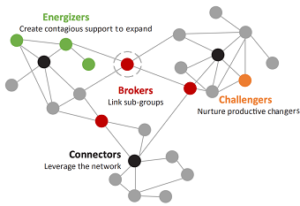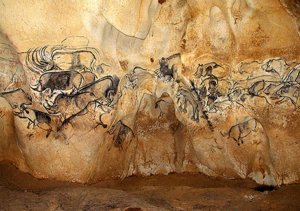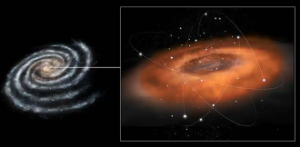
Arquivo para November, 2023
Unitas multiplex, networks and the beatitudes
Among the main concepts developed by Edgar Morin are cosmic Dasein (similar to Heidegger’s Dasein but expanded to the cosmic and similar to Teilhard Chardin’s Cosmic Christ), hominization and human identity, which is also linked to anthropolytic, but a fundamental and new is Unitas Multiplex.
Edgar Morin are cosmic Dasein (similar to Heidegger’s Dasein but expanded to the cosmic and similar to Teilhard Chardin’s Cosmic Christ), hominization and human identity, which is also linked to anthropolytic, but a fundamental and new is Unitas Multiplex.
According to Jean Ladriére Unitas Multiplex is “a system is a complex object, made up of distinct components joined together by a certain number of relationships”, and this both combines with the concept of social networks (not media) and Morin’s complexity, and Here we will establish a set of relationships with the biblical virtues of the beatitudes.
In a complex system, a certain number of relationships may be broken, what in social networks are called “structural holes” (Burt, 1992), weak ties (Granovetter, 1973) and small worlds of Duncan Watts (1998)
A system represented as a social network is a structure that connects nodes (forms a mathematical graph), generally each of these nodes are people, and links between nodes, representing relationships between these people (GRANOVETTER, 1973).
For Granovetter, bridges are links that enable weak ties, those that are on the periphery of the network or that are only reached by some nodes.
But neither the network theory nor the unitas multiplex theory establish the virtues that enable greater contact between these nodes, and as all these nodes can be reached, talking about empathy and bonds of solidarity is little, the biblical beatitudes can help.
Jesus climbs a mountain and speaks to a crowd of people, not just the disciples but everyone who wants to hear him (Mt 5:3-12):
“Blessed are the poor in spirit, for theirs is the Kingdom of Heaven. Blessed are the afflicted, for they will be comforted. [the weak ties]
Blessed are the meek, for they will possess the earth. Blessed are those who hunger and thirst for righteousness, for they will be satisfied. [the strong ties]
Blessed are the merciful, for they will obtain mercy. Blessed are the pure in heart, for they will see God. [empathy]
Blessed are those who promote peace, for they will be called children of God. Blessed are those who are persecuted for the sake of righteousness, for theirs is the Kingdom of Heaven!
Blessed are you when people revile you and persecute you and falsely say all kinds of evil against you because of me. Rejoice and be glad, for your reward will be great in heaven” [keeping the net united to the mystical body or “cosmic dasein”].
It seems heroic, or utopian, but if we want a peaceful Homeland, it’s a good recipe.
BURT, R. S. The social structure of competition. In: NOHRIA, N.; ECCLES, R. G. Networks and organizations: structure, form and action. Boston: Harvard Business School, 1992.
GRANOVETTER, M. S. The strength of weak ties. American Journal of Sociology, Chicago, vol. 78, no. 6, p. 1360-1380, May 1973.
WATTS, D. J.; Strogatz, S. H. (1998). “Collective dynamics of ‘small-world’ networks” (PDF), NATURE, VOL 393, 4 June.
Homo economicus and the reduction of Being
Still on the Human Identity Card, chap. 2 of the book Terra-Pátria by Edgar Morin, after a long speech on the prehistoric issue, there are already new advances and discoveries in this sense, such as the Chauvet Cave (discovered by amateur cavers in 1994, including Jean-Marie Chauvet) , show that what is called human subjectivity is something present and intrinsic in man that makes us rethink his “genetic” origin.
book Terra-Pátria by Edgar Morin, after a long speech on the prehistoric issue, there are already new advances and discoveries in this sense, such as the Chauvet Cave (discovered by amateur cavers in 1994, including Jean-Marie Chauvet) , show that what is called human subjectivity is something present and intrinsic in man that makes us rethink his “genetic” origin.
This cave from 32 thousand years ago (photo), from the Paleolithic period, shows through the paintings and environments of a cave that man, even if primitive, had feelings that were far superior to what we think dated back to our era.
Morin shows the fragmentation of this vision of man’s being: “Man’s biological characteristics were discussed in biology departments and medicine courses; psychological, cultural and social characteristics were divided and installed in the various departments of human sciences, so that sociology was unable to see the individual, psychology unable to see society, history accommodated itself apart and economics extracted from the Homo sapiens demens the bloodless residue of Homo economicus.” (MORIN, 2003, p. 61)
Philosophy can only “communicate with humans in experiences and existential tensions such as those of Pascal, Kierkegaard, Heidegger, without however ever being able to link the experience of subjectivity to anthropological knowledge” (idem), and only in the 1950s -60 thoughts appear about “the first approaches to the universal dialectic between order, disorder and organization…” (ibidem) and which will lead us to the basis of a fundamental anthropology.
Morin launches 5 essential points to get out of planetary agony: “• we are lost in the cosmos; • life is solitary in the solar system and probably in the galaxy; • the Earth, life, man, consciousness are the fruits of a singular adventure, with astonishing adventures and leaps; • man is part of the community of life, although human consciousness is solitary; • the community of humanity’s destiny, which is specific to the planetary era, must be inscribed in the community of terrestrial destiny.” (MORIN, 2003, p. 63).
Morin launches 5 essential points to get out of planetary agony: “• we are lost in the cosmos; • life is solitary in the solar system and probably in the galaxy; • the Earth, life, man, consciousness are the fruits of a singular adventure, with astonishing adventures and leaps; • man is part of the community of life, although human consciousness is solitary; • the community of humanity’s destiny, which is specific to the planetary era, must be inscribed in the community of terrestrial destiny.” (MORIN, 2003, p. 63).
Morin’s thought is not a treatise on humanity, but a warning of the dangers that this false imperative economic, power and environmental disaster adventure has led us to.
MORIN, E. and Kern, A.B. Terra-Pátria. Trans. by Paulo Azevedo Neves da Silva. Brazil, Porto Alegre: Sulina, 2003.
Terrestrial identity and the black hole
Chapter 2 of Edgar Morin’s book is “The Terrestrial Identity Card” where he states that after the discoveries of astrophysics, biology, paleontology, ideas about the life of the universe, the nature of the Earth and man’s own life were “subverted in the 1950s-1970s” and we still didn’t have James Webb and the discovery of the ties between homo sapiens and Neanderthals.
Terrestrial Identity Card” where he states that after the discoveries of astrophysics, biology, paleontology, ideas about the life of the universe, the nature of the Earth and man’s own life were “subverted in the 1950s-1970s” and we still didn’t have James Webb and the discovery of the ties between homo sapiens and Neanderthals.
“Afterwards, with Copernicus, Kepler, Galileo, the Earth stopped being the center of the universe and became a round planet around the Sun, like the other planets” (page 43) and seemed to “witness the perfection of its divine creator” for order and regularity, until an expanding universe was discovered based on Hubble’s observations of the separation of stars in 1923, the astrophysicist would later give his name to the famous telescope already surpassed by James Web.
At the beginning of the 19th century, “Laplace expelled the Creator God from a self-sufficient universe that had become a perfect machine for all eternity” (pg. 44) and not cited there, but also in a Mathematics Conference at the beginning of the 19th century. . XX Hilbert proposes some last problems not solved by mathematics, to say that everything is logical and mathematical.
In 1965, Arno Penzias and Harold Wilson would give facts for this expansion of the universe as an “isotropic radiation originating from all horizons of the universe” and this “cosmological background noise” a kind of “fossil residue” from the initial deflagration of the initial explosion that would confirm the famous Big Bang theory, today the new data casts doubt on this, but something remained from this period, which is the conception of anti-matter and the investigation of black holes.
The 1960s, when Penzias and Wilson won a Nobel Prize, would bring new celestial bodies among them: “quasars (1963), pulsars (1968) (pg. 44), then black holes, and astrophysicists’ calculations suggest that we only know 10% of the matter, 90% of which is still invisible to our detection instruments” and that James Web is only now looking at.
The center of our galaxy is no longer the sun, but a black hole, and in it unfolds a whole new vision of the universe as “in its beginning the Unknown, the Unfathomable and the Inconceivable” (pg. 44), here we are now in a galaxy 8 billion years after “the birth of the world, and which, with its neighbors, seems attracted to a huge invisible mass called the “great Attractor” “ (idem), which is a black hole.
And we, a small planet, created 4 billion years ago, discover that it has a history, “and takes shape in the 19th century” and on the threshold of the 20th century, the German Alfred Wegener elaborates the theory of continental drift, despite the initial resistance, proven later.
After its initial long periods of cooling, the formation of the first microorganisms, and finally man appears, “the last and deviant branch of the tree of life, appears within the biosphere, which, linking ecosystems to ecosystems, now involves the entire planet”, This early birth, in recent discovery also unites Neanderthals and homo sapiens.
If “Bacon, Descartes, Buffon, Marx make it their mission to dominate nature and reign over the universe” (pg. 54), “from Rousseau onwards, romanticism will umbilically link the human being to Mother Nature” and thus, having a mother, man can be born and inhabit this Mother Earth.
MORIN, E. and Kern, A.B. Terra-Pátria. Trans. by Paulo Azevedo Neves da Silva. Brazil, Porto Alegre: Sulina, 2003.

